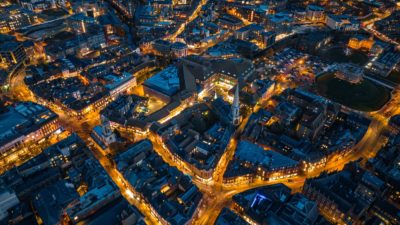The last time BP (LSE: BP) shares traded above the 600p level was back in March 2010, shortly before the Deepwater Horizon disaster. And when the eventual costs to BP of the explosion and resulting oil spill were finally becoming known, we were hit by the oil price crash, which sent the price of a barrel plunging to sub-$30 levels.
The BP share price is now back up to 461p, well ahead of the 309p low it hit almost exactly a year ago, so are we heading back above that elusive £6 level once again? I think we could be, and sooner than many might expect.
At the start of the oil price fall, BP chief Bob Dudley said he expected prices to remain down in the dumps for at least two-to-three years — and he was worth listening to, as things do seem to be panning out that way. The oil price looks reasonably stable at around $55 per barrel, and though we’re seeing some short-term spikes in oil inventories, world production is increasingly looking like it really is going to be cut back over the longer term.
Back to profit
BP’s full-year results, released on Tuesday, saw the FTSE 100 giant swinging back into profit, with a full-year headline profit (excluding Gulf of Mexico legacy costs) of $115m compared to a loss of $6.5bn in 2015. And, perhaps more indicative for the future, it reported an underlying replacement cost profit of $400m in the fourth quarter, with a full-year figure of $2.6bn.
That’s at an average price of $44 per barrel through the year, and we’re already 25% ahead of that today. BP’s total production for 2016 amounted to 3,268 thousand barrels of oil equivalent per day, which is 1,192,820 thousand barrels in total — or a little over 1.19bn barrels.
At $55, the same production this year would bring in an extra $13bn in revenue — and a further $10 per barrel would take that up by $25bn. And I think even rises like that would be very conservative estimates over the longer term — I’d expect to see oil certainly above $75 within five years.
BP is also turning away from the asset disposals that have dominated the last few years, and back towards new developments. In 2016, BP “launched six major project start-ups […] and made final investment decisions on a further five major projects,” in the words of Mr Dudley. He went on to say: “We start this year with considerable momentum – and a sense of disciplined ambition. We have laid the foundations for BP to be back to growth.“
Handing out cash
And then we come to BP’s dividends. All through the crisis, the company has stuck to its insistence that it won’t cut its dividend, even though earnings weren’t even close to covering it — such was BP’s confidence that the cheap oil hit to cash flow was only going to be temporary.
BP made good on that, paying an unchanged 40 cents per share. That’s expected to be unchanged for the next two years, and would provide a yield of 6.8% — and predictions suggest earnings would be just enough to cover it.
Such a high yield, if it’s expected to be sustainable, also suggests to me that the shares are too cheap — even at 600p we’d still be looking at a yield of better than 5%.







